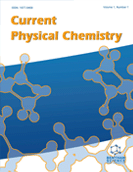
Abstract
Transition metals exhibit a remarkable capacity to catalyse redox processes, playing a crucial role in various natural, biological, and chemical transformations. Among all the elements in the periodic table, iridium stands out with the broadest range of oxidation states. With its electronic configuration of 5d76s2, iridium displays a range of oxidation states, fluctuating from —3 in [Ir (CO)3]3- to +9 in [IrO4]2+. The utilization of iridium as a catalyst stems from its capability to adopt these variable oxidation states. Notably, Iridium (III) complexes exhibit significant catalytic activity in both acidic and basic environments, facilitating a diverse array of organic and inorganic chemical transformations. The catalytic mechanism adapts according to the specific conditions under which the catalysts are employed. Iridium's catalytic efficiency is notably enhanced in an acidic environment, as highlighted in the review, compared to its performance in a basic medium. Iridium stands as the sole reported catalyst with the capability to harness sunlight and transform it into chemical energy, offering promising prospects for application in artificial energy systems. The high surface-to-volume ratio of IrNPs contributes to their excellent catalytic performance. As research in Nanocatalysis continues to evolve, iridium remains a key player in shaping the future of sustainable and efficient chemical processes.











